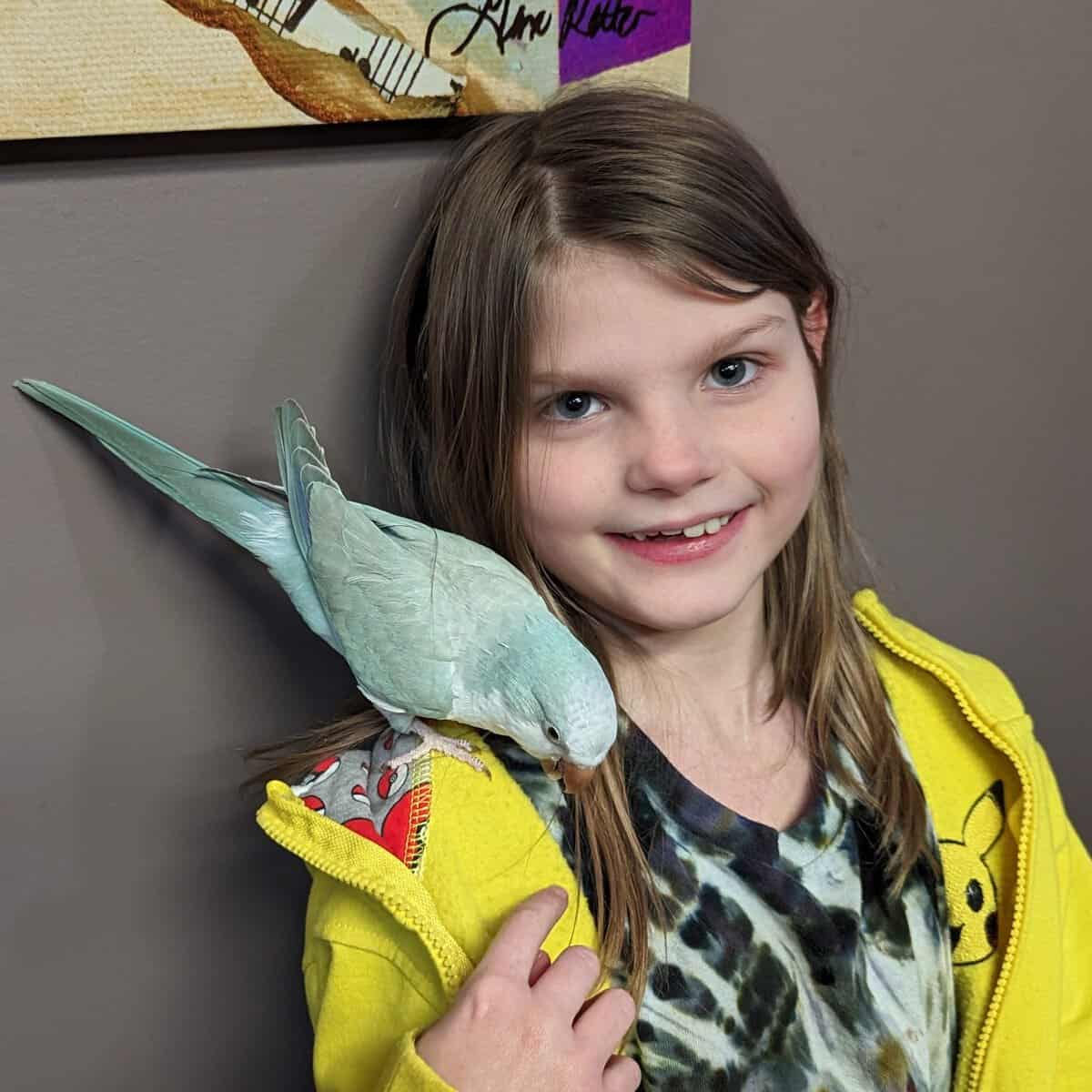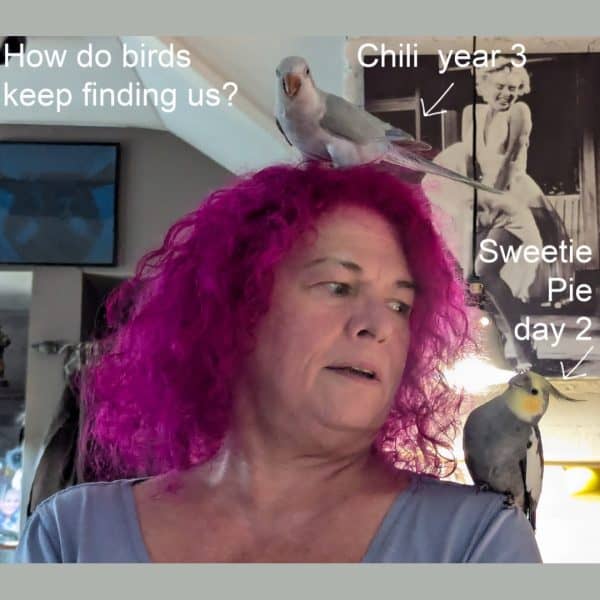
A Guide to Understanding Parrot Body Language and Vocalizations
Last Updated on by Mitch Rezman
Introduction
Parrots are some of the most expressive pets, with the ability to convey their thoughts and emotions through both body language and vocalizations.
Whether you are a new parrot owner or have years of experience with these intelligent birds, understanding how they communicate can significantly improve your relationship. While parrots can mimic human speech, they primarily express themselves through a variety of physical cues and sounds that need careful attention.
In this guide, we’ll take an in-depth look at how parrots use body language and vocalizations to express their needs, feelings, and even their thoughts.
By understanding these cues, you can build a stronger bond with your feathered friend and ensure their well-being.
Why Understanding Parrot Communication Matters
**Strengthening the Bond With Your Parrot:** Just like humans, parrots rely on communication to develop trust and connection. The more you understand their signals, the better you’ll be able to respond to their needs.
**Ensuring Your Parrot’s Well-Being:** Parrots can’t verbally tell you when they’re stressed, sick, or unhappy. Observing changes in their behavior allows you to respond early to potential problems.
**Avoiding Miscommunication:** Many behavior problems in parrots stem from misunderstandings between owners and their pets. When you know what your parrot is trying to tell you, you can avoid escalating issues like aggression or anxiety.
Basics of Parrot Body Language
Parrots primarily use their bodies to express themselves.
Their movements can convey everything from happiness to discomfort, and by learning to decode these signals, you can better cater to their needs.
**General Behavioral Cues:**
– Relaxed body posture usually indicates contentment.
– A rigid, tense posture can be a sign of stress or fear.
Head Movements and Their Meanings
**Head Bobbing:** This is a common behavior in many parrots. It can indicate excitement, hunger, or an attempt to communicate with you or other birds.
**Tilting:** When a parrot tilts its head, it’s usually a sign of curiosity. Your bird may be trying to get a better look at something or someone that has caught its attention.
Wing Behavior in Parrots
**Flapping:** Wing flapping, especially if your parrot is stationary, is often a sign of excitement or a way for them to stretch their wings. It may also serve as a form of exercise, particularly for caged birds.
**Drooping Wings:** Sometimes parrots will let their wings droop slightly when they are relaxed or tired. However, consistently drooping wings can also signal illness, so it’s essential to monitor for other signs of poor health.
**Wing Spreading:** If your parrot spreads its wings wide, it may be trying to display dominance or establish territory. This can also occur if the bird is feeling defensive.
Tail Movements and What They Mean
**Tail Wagging:** Much like a dog, a parrot may wag its tail when it’s happy or excited. It’s often seen after a bout of preening or during playful moments.
**Fanning Tail Feathers:** This behavior is usually linked to aggression or heightened emotions. If your parrot fans its tail feathers, it could be preparing to defend itself or its space.
**Tail Bobbing:** Subtle bobbing of the tail can occur when a parrot is breathing heavily, especially after physical exertion. However, rapid or pronounced tail bobbing can also indicate respiratory issues.
Understanding Parrot Feet and Claws
**Foot Tapping:** This behavior often signals impatience or discomfort. If your parrot taps its foot, try to identify what might be causing frustration.
**Claw Gripping:** When a parrot grips your finger or perch tightly, it can indicate relaxation or a need for security. Many parrots do this when they are comfortable with their environment.
Eye Expressions in Parrots
**Pinning and Flashing:** Eye pinning refers to the rapid constriction and dilation of a parrot’s pupils. This usually indicates excitement, but it can also be a sign of agitation.
**Relaxed Eyes:** When a parrot’s eyes appear soft and relaxed, it’s a clear sign of contentment and calm.
Feather Ruffling and Puffing Up
**Preening and Ruffling:** Parrots preen themselves to keep their feathers in good condition. Occasionally ruffling the feathers is a sign of grooming or relaxation.
**Puffing Up:** Parrots puff up their feathers when they are cold, trying to appear larger, or feeling unwell. If your parrot puffs up frequently, especially without a change in temperature, it might be a sign of illness.
Parrot Beak Expressions and Sounds
**Beak Grinding:** Many parrot owners hear a grinding noise as their bird settles down for sleep. This is a sign that the parrot is relaxed and content.
**Beak Clicking:** Parrots often click their beaks when they feel threatened or are trying to assert dominance. If your bird starts clicking its beak, proceed cautiously.
Vocalizations: The Key to Parrot Speech
Parrots are known for their ability to mimic sounds, including human speech. However, they also produce a wide range of vocalizations, each with its own meaning.
**Mimicking Human Speech:** Parrots repeat words they’ve heard for various reasons, including attention-seeking or bonding. However, they don’t fully understand the meaning of these words.
Common Parrot Vocalizations
**Screaming:** This is a loud, sharp vocalization often used by parrots to get attention or express boredom. While it can be frustrating for owners, screaming is a natural behavior, especially for social birds that crave interaction.
**Whistling:** Many parrots whistle when they are happy or feeling playful. It’s a pleasant sound that often indicates a positive mood.
**Chattering:** Parrots chatter softly when they are content or trying to communicate casually with their human companions or other birds.
Interpreting Parrot Noises Based on Context
**Environmental Triggers:** Pay attention to how your parrot’s sounds change in different environments. Loud noises, unfamiliar people, or changes in the room can trigger different vocalizations.
**Interaction With Humans and Other Animals:** Parrots often mimic the emotional tone of their environment. If the household is energetic, your parrot may become louder and more vocal.
How to Respond to Your Parrot’s Body Language and Vocalizations**
**Positive Reinforcement:** When your parrot exhibits desirable behavior, use treats, praise, or petting as a reward. This reinforces positive behavior and helps strengthen your bond.
**Managing Aggressive or Anxious Behavior:** If your parrot shows signs of stress, such as feather plucking, aggression, or excessive screaming, it’s crucial to address the underlying cause. Reducing noise, adjusting their environment, or spending more time with your parrot can help.
Conclusion
Understanding your parrot’s body language and vocalizations is key to fostering a healthy, happy relationship. By observing their movements and listening to their sounds, you can better meet their needs, avoid miscommunication, and create a positive environment for your feathered friend. Parrot communication is complex, but with patience and attention, you’ll find yourself becoming fluent in their unique language.
FAQs
- **How do I know if my parrot is happy?**
A happy parrot will often whistle, chatter, and show relaxed body language, such as soft eyes and a calm posture.
- **Why does my parrot scream so much?**
Parrots may scream for attention, out of boredom, or due to stress. Ensuring plenty of interaction and stimulation can reduce excessive vocalization.
- **Can parrots understand human speech?**
While parrots can mimic human words, they do not fully understand their meanings. They often repeat sounds that catch their interest or get them attention.
- **What does it mean when my parrot puffs up?**
Puffing up can indicate that a parrot is cold, defensive, or feeling unwell. If it happens frequently, consider checking for signs of illness.
- **How can I calm my parrot when it’s agitated?**
To calm an agitated parrot, speak in a soft, reassuring tone and remove any potential stressors from its environment. Reducing noise or offering a familiar toy can also help.
Written by Mitch Rezman and the Windy City Parrot Content Team
Author Profile
Latest entries
 The Traveling BirdJune 26, 2025Can You Name 5 Parrot Species That Are Living Wild in the USA?
The Traveling BirdJune 26, 2025Can You Name 5 Parrot Species That Are Living Wild in the USA? Bird BehaviorJune 26, 2025How is it Parrots Are Problem Solvers Social Animals and Even Use Tools?
Bird BehaviorJune 26, 2025How is it Parrots Are Problem Solvers Social Animals and Even Use Tools? Bird & Parrot AnatomyJune 25, 2025How a Tiny Chemical Modification Makes Parrots Nature’s Living Paintings
Bird & Parrot AnatomyJune 25, 2025How a Tiny Chemical Modification Makes Parrots Nature’s Living Paintings PigeonsJune 20, 2025How Do Parrots Thrive in Cities Outside Their Native Habitats?
PigeonsJune 20, 2025How Do Parrots Thrive in Cities Outside Their Native Habitats?


